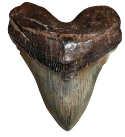European Settlement
The European settlement of Carolina began in 1670 near present-day Charleston. Established by eight Lords Proprietors who received their charter from King Charles II, the region was envisioned as a province “based upon a local hereditary nobility and the permanent ownership of land”.1 This plan, set forth in the Fundamental Constitutions, was to be accomplished through the creation of signiories (reserved for Lords Proprietors only) and baronies (to be occupied by landgraves, cassiques, and barons). Three baronies-Fairlawn, Cypress, and Wadboo, each consisting of twelve thousand acres-were established in the Cooper River region. Although this baronial system never fully developed, the relatively small number of large plantation tracts still located on and near the river reflects their origins in these baronies.2
Simply the Best In Blackwater Diving
COOPER RIVER DIVE CHARTERS
Historic Resources of the Cooper River, ca. 1670-ca. 1950
The first settlers were largely English, some coming through Barbados or other English possessions in the Caribbean but many directly from Great Britain. These Anglicans took up the earliest grants, particularly south of the Tee of the Cooper on its tributaries of Goose Creek, from 1672 to 1680. After that date French Huguenots first came to South Carolina and in the succeeding decade established themselves in the area, particularly at French Quarter Creek. Their settlement, encouraged by pamphlets distributed in Protestant areas of France, was often called Poitevin after the chief organizer of the colonists there, Antoine Poitevin.3 The Huguenots were soon followed by groups from Holland, Scotland, England, northern Ireland, and Germany, many of them encouraged to settle in the Carolina colony by the promise of religious toleration as outlined in the Fundamental Constitutions.4
Life on the Cooper River was difficult for all settlers throughout the colonial period, as indeed in all of the Carolina colony. The population did not experience great natural increase until a fter 1770, as themortality rate was extremely high in both town and city. Although St. John’s Berkeley Parish fared somewhat better than Christ Church Parish (nearer to Charleston), the vast majority of individuals did not reach the age of twenty and of those who did one-third did not reach forty. The first Carolinians considered the country to be safer for health reasons than the city of Charleston.

A 1733 map of Charleston published by Herman Moll.
Restored to the throne following Oliver Cromwell's Protectorate, King Charles II granted the chartered Carolina territory to eight of his loyal friends, known as the Lords Proprietors, in 1663. It took seven years before the Lords could arrange for settlement, the first being that of "Charles Town," the original name for the city.
Simply the Best In Blackwater Diving
Copyright 2020
Cooper River Dive Charters
260 Amy Drive
Goose Creek, SC 29445
843-296-3344
Historic Resources of the Cooper River, ca. 1670-ca. 1950
United States Department of the Interior
National Park Service
National Register of Historic Places






